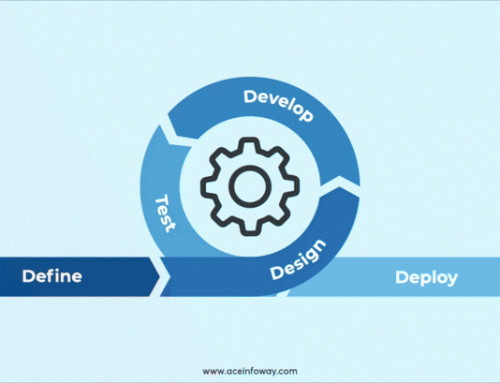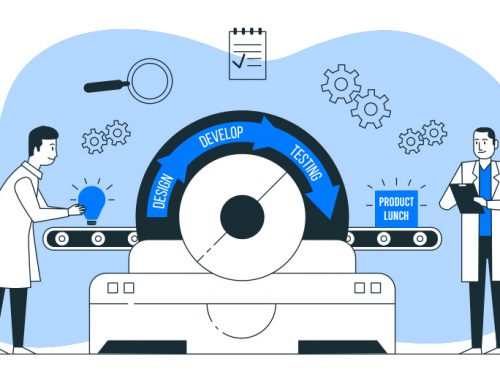Table of Contents
“Automation is good, so long as you know exactly where to put the machine.” – Eliyahu Goldratt
The current IT industry is booming with digital disruption which plays a major part by being the next Technological Boom. The enterprises in today’s times have a goal to channelize the power of digital to upgrade the customer experience and bank upon the end to end business opportunities.
Knowledge in work automation could have economic impact of $5-7 trillion by the year 2025. It will touch more than 230 million knowledge workers, nine percent of the global workforce.
Machine Learning and Artificial Intelligence are one of the favourite topics for speculation but out of them, Robotic Process Automation (RPA), which grew to prominence in 2017, now is one of the leading preferences for enterprises to augment towards digitalization. It is known that with a combination of advanced technology and a clear understanding of the opportunities that can be tapped, enterprises are opting for RPA to fulfil their key digital initiatives.
Enterprises get lured with the idea of ML and AI for automation purposes but also fear to implement the same with the thought that it is going to be expensive and a complex technology to adapt to. Along with this, even RPA is ignored, which is actually an easy-to-implement and cost effective way to get started with automation. RPA is enough to achieve 80% of the automation objectives.
What is RPA?
Robotic process automation (RPA) is a business process automation technology. It is more similar to macros or scripted solutions.
Now let’s understand these 3 words.
Robotic: When a machine mimics human action, then it is called as Robotic.
Process: A sequence of steps to perform/complete a task, is called as a Process.
Automation: Any task when done without human intervention is what we call as Automation.
So, in a nutshell, what comes out to be a definition of RPA is that when a machine mimics the human actions in order to perform the sequence of steps without any human intervention is called as Robotic Process Automation.
RPA are taught their tasks instead of being programmed, designed using machine learning. RPA can help solve routine work woes, while the employees can shift their concentration on more complicated and strategy driven tasks. RPA bots see, compare, reference, and establish patterns. Software robots are equipped with the same digital skillset as your workforce—everything from logging in to copy-paste to correcting missing data details. Put bots in, anywhere.
It is estimated that up to 45 percent of the activities companies pay people to perform can be automated through RPA.
RPA has the ability to perform repetitive tasks with high efficiency and in less turnaround time. They have the functionality to move around effortlessly between different programs as a human user would. The applications of RPA are boundless across any industry. Enterprises are looking to automate rules based, repetitive tasks in a cost effective manner with RPA.
Types of RPA
There are various kinds of automation solutions and with RPA, there arises two important breeds of automation which enterprises can choose for deployment to create a unified, integrated RPA platform.
Just as certain industry marketplaces become more connected and complex, the automation solutions necessary to cut through this complexity also take on a more nuanced or intricate approach.
- Attended RPA:Also known as Robotic Desktop Automation (RDA), helps agents manage mechanical and daily tasks performed in routine. It requires an agent to trigger and engage with automated actions. This allows industries to unleash their complete potential.
- Unattended RPA: These bots are generally unattended, and usually run on servers with little or no human intervention. These are not self learning at all. They just perform the tasks they are entitled to do. Once deployed, they will run on a preset
schedules or even 24/7/365.
RPA < ML < AI

Attended and Unattended RPA are not mutually exclusive. For a workflow to be used at its efficient best and be optimized to its maximum, a combination of both works wonders. RPA does not define Machine Learning or Artificial Intelligence. RPA is more mature and developed than ML and AI. There have been a lot of instances and examples where companies have implemented RPA first and then later moved to implementing AI. it is very natural for laymen to get confused between multiple terms like Artificial Intelligence, cognitive computing, Neuro linguistic programming and more. What actually matters is how these terms’ functions are a help to your enterprise and how can your customers benefit from it.
Advantages of RPA
- Enables unprecedented security with ironclad encryption and strict access control.
- Has the capacity to handle small errors without stopping the process.
- Can execute tasks at its fastest best, without slowing down or taking breaks.
- RPA can achieve 100% accuracy with error free execution, every time.
- The business process compliance is improved as RPA strictly follows the rules and does not deviate from its assigned path.
- Delivers business intelligence by transforming the detailed reports in real time with its analytics into performance insights.
- RPA completely eliminates data entry and other manual errors.
- RPA has the capacity to manage sensitive data, and reduces the possibility of compliance and fraud issues.
Conclusion
Companies indispensably have to choose from 2 options to minimize effort for repetitious tasks minimal human judgement, these tasks need to be upgraded for automation:
- Either they upgrade existing legacy systems to latest ones which enable automation
- Use bots that act as an interface with legacy systems and automate these tasks
If you choose the second option because of cost or schedule of system upgrades , you need to choose an RPA partner who can guide you from the inception of the project. RPA must be a top priority among organizations that are looking to target workflow optimization and digital transformation. There’s no better way to begin exploring RPA than by understanding the potential of it to make with work in sync with the business objectives.

























Leave A Comment